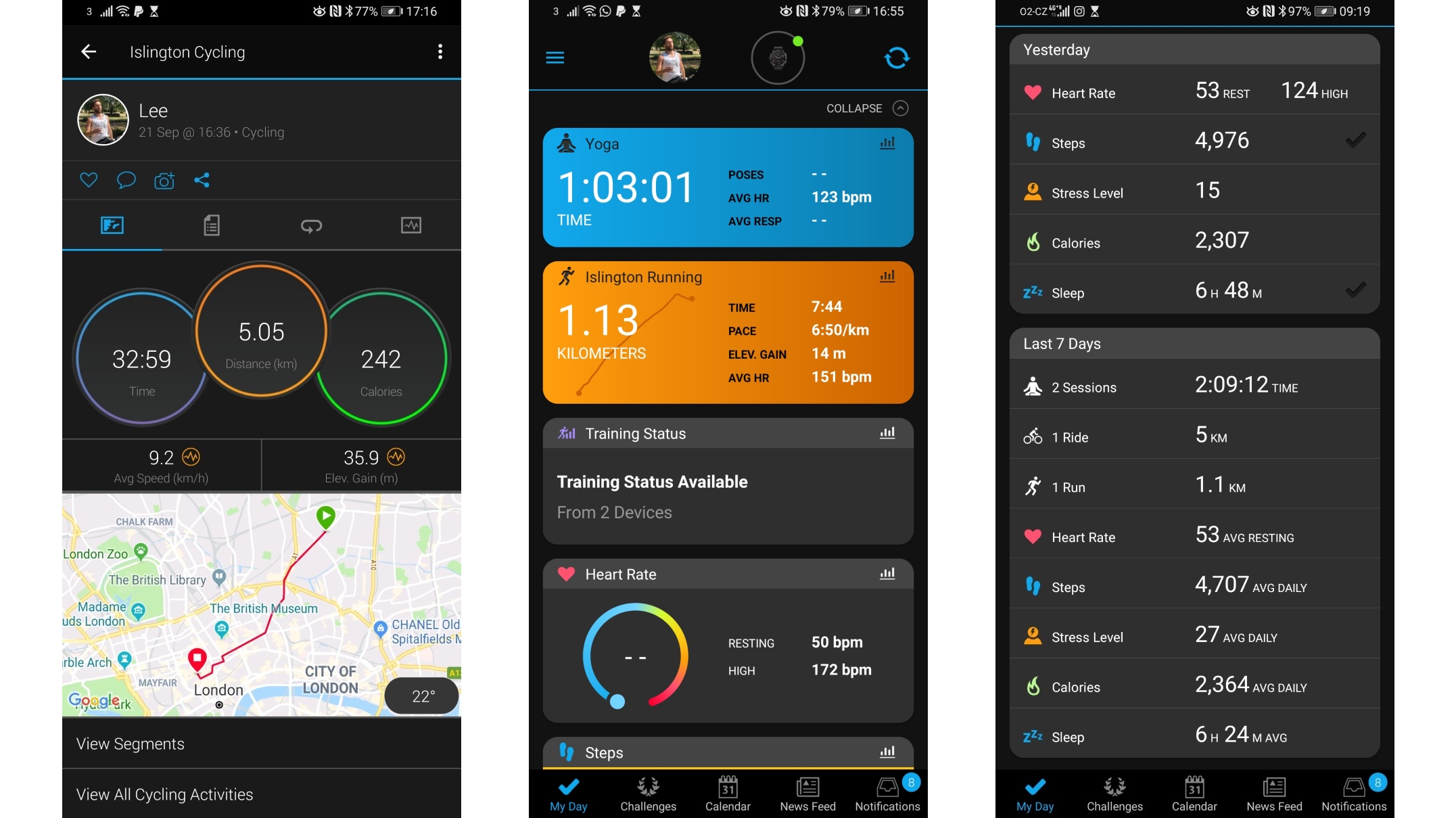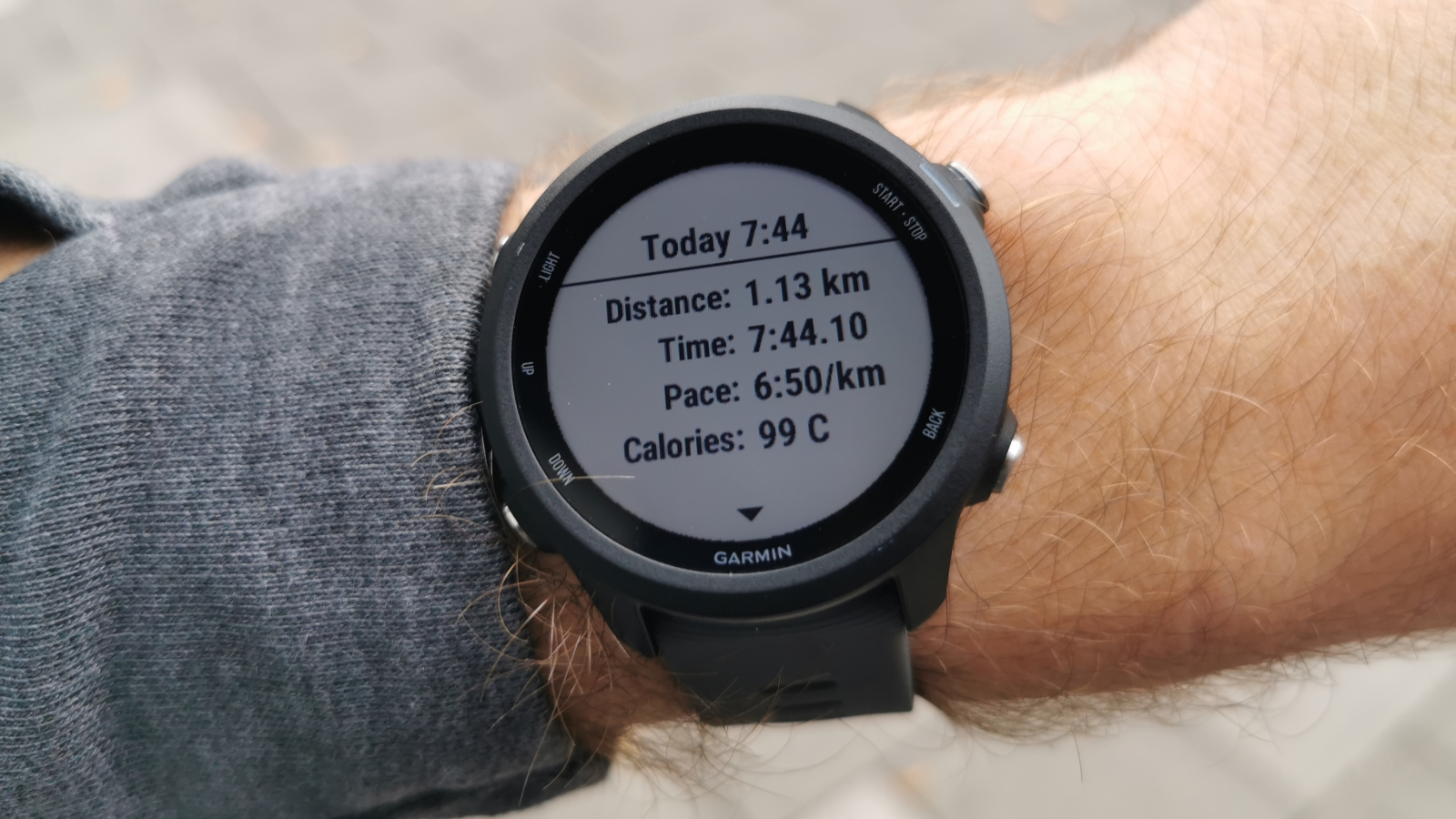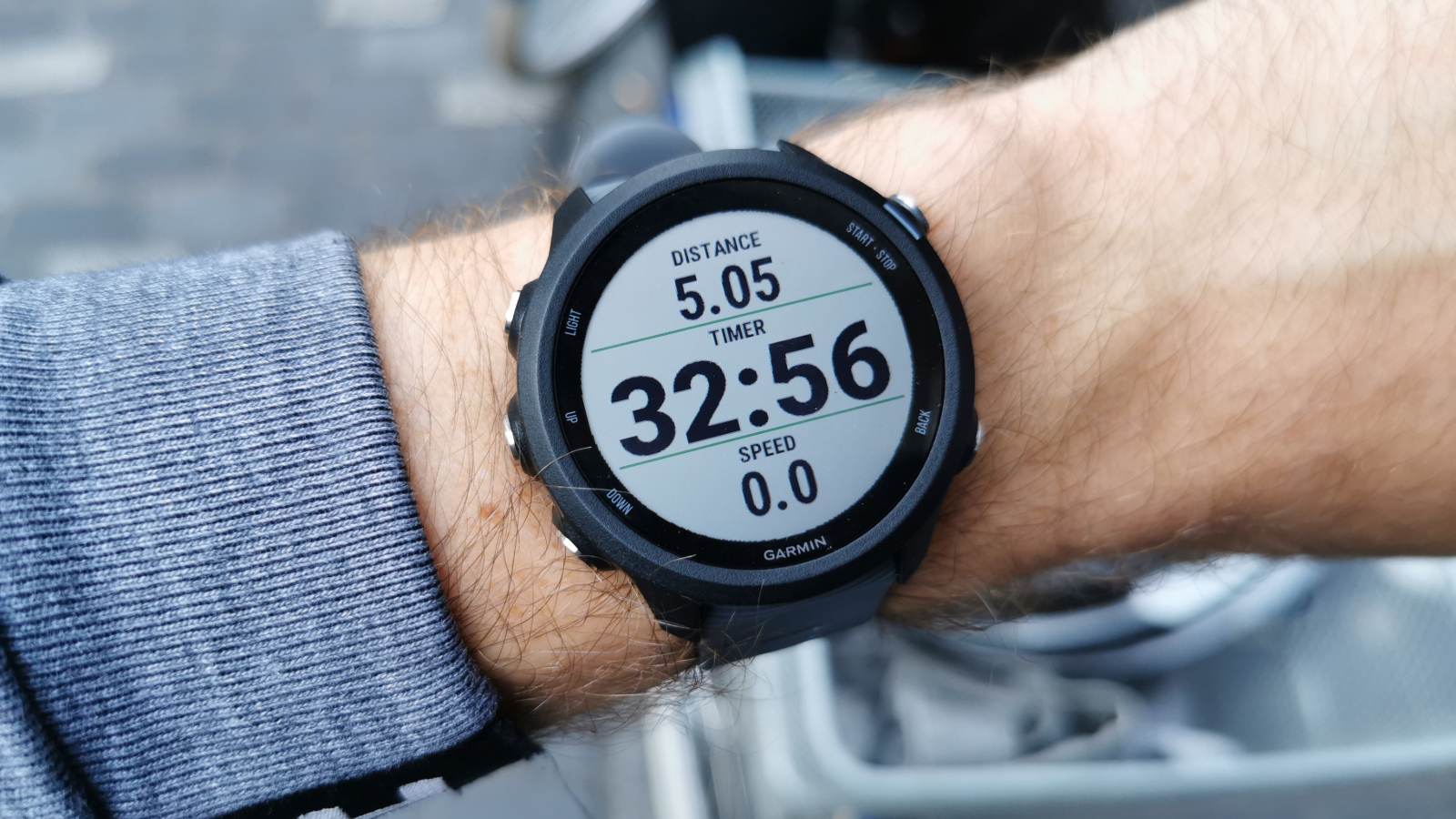Why you can trust TechRadar
Performance and activity features
- Massive update to fitness tracking features including stress tracking
- Updated sensors and more accurate heart rate monitoring
- Strength and swimming tracking options added
One area in which Garmin has gone to great lengths to improve the Forerunner 245 over the previous model is in its sports-tracking capabilities and related tools, which give users a deeper insight into their training performance as well as more accurate results.
As before, preset tracking options are as follows: run, trail run, indoor track running, yoga, cardio, treadmill, cycling, indoor cycling, indoor rowing, walking, indoor walking, elliptical, and stair stepper.
New options over the Garmin Forerunner 235 are pool swimming and strength workout tracking, although, as ever, you can create your own workout via the 'other' option, adding whichever tracking tools you’d like to utilize, be it GPS or whatever else. This is easy to do and means you can really customize the watch to your needs.

Something else we really enjoyed on the Garmin Forerunner 245 was the improved user interface. If you’ve used a Forerunner 235 in the past, you’re bound to like Garmin's improvements here. It now presents you with nicer, larger icons and fonts, and there’s now a better use of color, making it so much easier to review data while on the go.
Widgets really come into their own here, too, as they help to better present data as digestible chunks. By simply tapping the Up button on the home screen, you can flick through a much more condensed line-up of essential recordings such as last activity, steps, weather, heart rate, notifications, music controls, and calendar, giving you a rundown of vital data at a glance.
As seen on the likes of the Forerunner 945 and the Fenix 6, Garmin has also equipped the 245 with a pulse oximeter, which was previously only available on such aforementioned high-end devices.
Essentially, this is a sensor which is used to gauge the saturation of oxygen in your blood. Knowing your oxygen saturation can help you determine how your body is adapting to exercise and stress, especially at high altitudes.
Sign up for breaking news, reviews, opinion, top tech deals, and more.

This works by shining light into the skin and checking how much of it is absorbed, something referred to as SpO2. On the Forerunner 245, these pulse oximeter readings appear as an SpO2 percentage, which you can read more about in the Garmin Connect app, including trends over multiple days.
Another feature that users didn’t see on the 235 but we have on the Forerunner 245 is all-day stress monitoring. This rather nifty tool - called Firstbeat - reminds us of the importance of stress reduction as well as rest and recovery in our training regimes.
Through utilizing heart rate variability (HRV), which refers to small changes in the interval between consecutive heartbeats throughout the day, this feature allows you to quickly see how much of your time is spent experiencing stress and how successful your body was in offsetting those stressful moments with adequate recovery.
Basically, if your body isn’t handling stress very well, this tool will notify you, prompting you that you need to recover and should probably rest rather than tracking another activity.
Speaking of activity tracking, everything you’d expect from a Forerunner is here on the 245. GPS was found and connected within one minute, meaning we could get going on our run without waiting around.

It's really straightforward to get started and review your workout once finished, and the available insights for this have been greatly improved over the 235, with completely revamped training load features. For example, training effect, status, and load modes have been filtered down from higher-end Garmin devices to give you a better insight into how well prepared you should be for your next activity.
There’s also a new Performance Condition metric, which gives an assessment - in real-time - of your ability to perform. This analyzes pace, heart rate and heart rate variability data to give you a condition score in the first 6 to 20 minutes of activity.
For running, all the standard tracking tools are here, such as distance, speed, and pace, and it’s super easy to tweak the stats that display on the watch during your session without having to go into the app. During a short jaunt, the Garmin Forerunner 245 provided some useful data while reacting quickly and intuitively throughout.

As for other activities, cycling tracking and yoga worked well and seemed accurate, undoubtedly thanks to the sensors, which have also been given an upgrade on the Forerunner 245. This includes the Garmin Elevate optical heart rate sensor, which judges heart rate using LED lights to illuminate blood flow through veins and capillaries.
However, one sensor you won’t find here is Garmin’s barometric altimeter, which is embedded in the Forerunner 645 Music and Vivoactive 3 Music. Although that’s only really needed if you’re training on hilly terrain and want to make use of elevation data.
Another slight disappointment was the lack of a multi-sports tracking option, which would have been ideal for those training for and wanting to track their triathlon attempts. For this, you’ll have to look into investing in a higher-tiered device, such as the Forerunner 945 or Fenix series.

Music version
- Up to "500 songs" worth of onboard storage (around 3.5GB)
- Download songs from your personal library or streaming service
- Streaming support for Spotify, Deezer, and Pandora
If you really want to run your tunes through your smartwatch, you can pick up the pricier Garmin Forerunner 245 Music - a version of the watch built to be a music hub on your workouts.
That extra costs gets around "500 songs" worth of space (around 3.5GB) on the smartwatch to locally download songs. Though this variant has WiFi connectivity, you'll have to use the dedicated Garmin Express computer app, plug in the smartwatch, and download the songs (or playlists from streaming services) manually.
Sleep tracking
- Still not one of Garmin's strong points
- Tracking not as accurate as it could have been
If there’s one thing that really lets this watch down, its sleep tracking. Like most fitness trackers, Garmin claims the Forerunner 245 is able to monitor total sleep and periods of movement or restful sleep if the watch is worn throughout the night.
However, we made use of this feature for four consecutive nights and while the amount of time registered as asleep seemed about right, it failed to pick up some key events. On the third evening of sleep tracking, we distinctly remember waking up to switch off the TV when it turned itself on so the Sky box could update. When we checked the Connect app, it had registered this as light sleep. Unless we dreamt it...
Nevertheless, Garmin’s sleep tracking doesn’t seem to offer the same level of depth and accuracy as seen on, say, Polar smartwatches. In comparison, Garmin lacks some of the deeper insights that we enjoyed testing on the Polar Ignite, such as sleep efficiency totals and accurately captured sleep interruptions, tools which are beginning to turn sleep tracking into more useful training insights.

Other features
- Handy safety/accident features
- Includes menstrual cycle tracking
- No Garmin Pay
As with most modern smartwatches, the Forerunner 245 is able to feed notifications to your wrist straight from your smartphone. There’s also a stopwatch, an alarm clock, automatic daylight saving updates, calendar sync, and weather information.
There’s also menstrual cycle tracking, making the Garmin Forerunner 245 one of the first watches to enable female users to track their cycle, receive period predictions, and log any symptoms. There is no Garmin Pay here, however.
Our favorite bonus feature is probably the addition of Incident Detection, which wasn’t seen on the Forerunner 235. It basically means that if you crash your bike the watch will notify someone. Similarly, there’s now also Safety/Tracking Assistance, which means at the press of a button you can send a help alert to friends or family.

Battery life
- At least 7 days of constant general use
- Now up to 24 hours of constant GPS tracking
- Fully charged from dead in under an hour
Garmin claims the Forerunner 245 will offer 7 days of constant use, or 24 hours with constant GPS tracking. While overall battery life has been reduced in the 245 over its predecessor, GPS battery life has been increased to 24 hours from 11 hours in regular GPS mode, which is a huge improvement.
Using the watch continuously for four days, including for sleep, and tracking five or so different types of sports/activities (using GPS for just a few of these), we found the battery drained 47%, which so far works out better than the 7 days of continuous use as advertised by Garmin.
And in case you’re wondering about charging times, the Garmin Forerunner 245 can be fully juiced from completely dead in just under an hour.
Current page: Fitness, features and battery
Prev Page Introduction, design and display Next Page Verdict and competitionLee Bell is a freelance journalist & writer specializing in consumer technology, health, and lifestyle. Lee is a qualified personal trainer, testing fitness watches, training shoes and everything in between.

